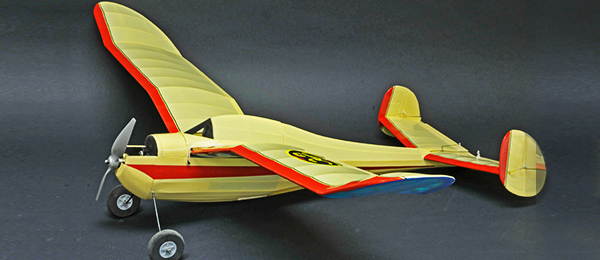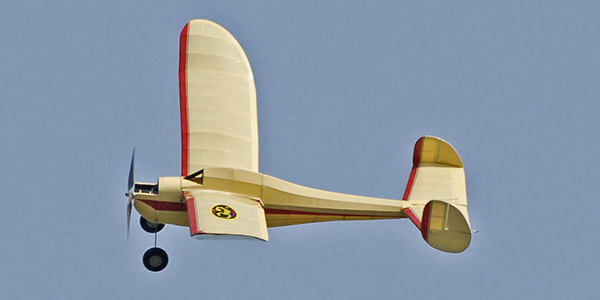BMJR Models Swami

Written by Jerry Smith As featured on page 61 in the March 2013 issue of Model Aviation. As featured in the Model Aviation tablet app.
SPECIFICATIONS Manufacturer: BMJR Models Model type: Nostalgic Old-Timer Skill level: Intermediate pilot; intermediate builder Wingspan: 46 inches Wing area: 307 square inches Airfoil: Flat bottom, undercambered Length: 30 inches Weight: 18.5 ounces Power system: 150- to 300-watt outrunner motor Radio: Three-channel with two microservos Construction: Balsa and light plywood Price: $92 Test Model Details Motor: Scorpion SII-2215-900 Kv outrunner ESC: Scorpion Commander 25A ESC Battery: Thunder Power three-cell 1350 mAh 45C Propeller: Advanced Precision Composites (APC) E 9 x 4.5 or 9 3.5 SF Radio system: Spektrum DX7 transmitter, Spektrum AR600 receiver, two Hitec HS-65HB servos Ready to fly weight: 18.5 ounces Flight duration: 15 minutes or more Pluses • Nostalgic look • Laser-cut parts • Excellent flying characteristics • Great visual appeal Minuses • Manual too abbreviated • Motor mount needs modification for outrunner motor • Stabilizer built into fuselage • Wheel-hub holes too large The July 1944 issue of Model Airplane News featured the Jerry Stoloff Swami design and reported:
 The nostalgic Swami can be powered with either a 400-size electric motor or .049 Texaco glow engine.
The nostalgic Swami can be powered with either a 400-size electric motor or .049 Texaco glow engine.
“The Swami was designed for the sole purpose of creating a high-performance airplane without sacrificing beauty. Its graceful curves make it an attractive bird and its twin rudders and stabilizer dihedral add to its stability. The gull wings raise the center of drag, which, in turn, keeps the ship climbing even under low power. When the motor cuts and it starts its glide, you will be amazed at the soaring qualities.” Because of its unique design, the Swami, when seen in the sky, cannot be mistaken for another model. Stoloff was credited as the first to use the fuselage-crutch construction method in his designs which consisted of two main longerons forming a crutch, with sticks or bulkheads added between them to form the fuselage top and bottom. This provided to be an easier build with a lighter and stronger fuselage, and was used in many of his designs. The BMJR Swami for this review was derived from the original plans obtained from AMA Plans Service. The only changes made were to accommodate laser-cutting technology, add RC control, and to use electric power. The Swami can be used with 400-size electric motor or .049 Texaco glow engine.
 This shows the laser-cut kit as it comes out of the box.
This shows the laser-cut kit as it comes out of the box.
Although it is a laser-cut kit, it does require good building experience and is not recommended for beginners. It is similar to building a nostalgic kit, but with precision-cut parts. Couple this with the great adhesives we have today, and it becomes a unique building experience. I am a fan of Mercury Adhesives CA and have used it throughout this build and many others, with the performance I have come to expect. The brief instruction manual assumes you are a builder and starts you out with the wing, which is the most work, then moves on to the stabilizer and the fuselage. Additional bonus photos to supplement the March 2013 review article
The BMJR Swami is not for everyone, but if you have some building skills you should be able to successfully build it. The wood in my review kit was decent and the plans were adequate, although the instruction manual left me hanging at times.
I found the rudders to be effective in flight, and the glide was excellent. The finished model, if correctly built, has excellent flying characteristics.
Because the model is unusual, expect plenty of remarks when you take it to the flying field. This is one Old-Timer I am proud to have in my hangar and fly on good, calm days.
Read the entire article on page 61 in the March 2013 issue of Model Aviation and in the Model Aviation tablet app.










Add new comment